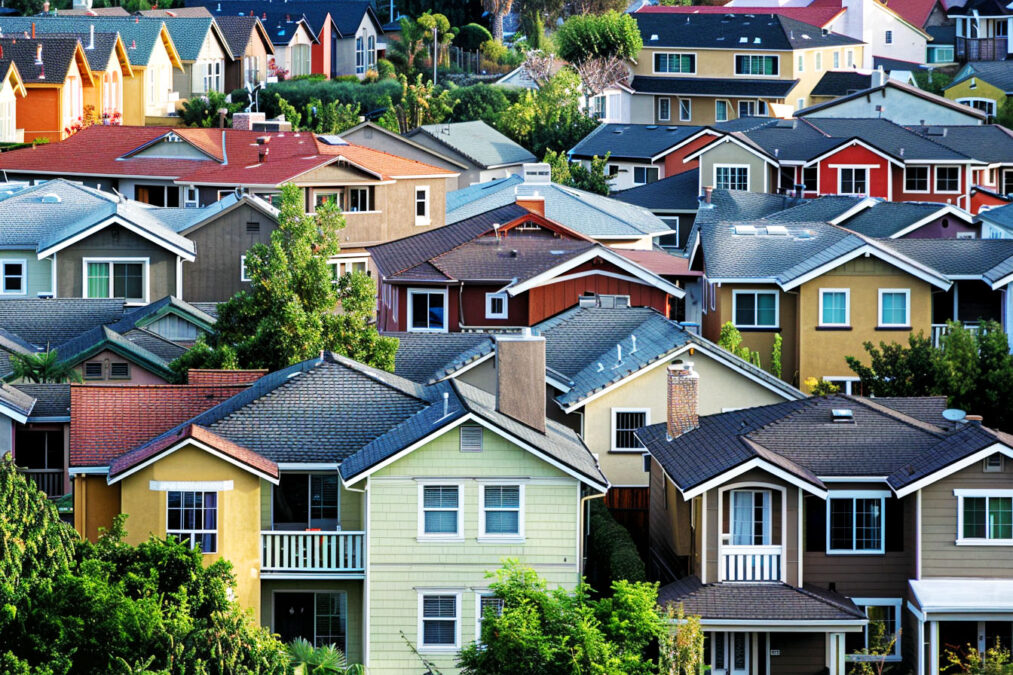Middle-Class Homes: The Heartbeat of American Stability

Every evening, Maria locks the front door of her cosy three-bedroom house, a sanctuary where her children laugh and her husband unwinds after a long day. This home, with its white picket fence and blooming garden, stands as a testament to years of hard work, dedication, and dreams realized. For Maria and countless other middle-class families across the United States, owning a home is more than just a financial investment—it’s the foundation of their lives, providing security, stability, and a sense of belonging. Their stories reflect the broader narrative of middle-class homeownership, highlighting the triumphs and challenges that define this pivotal aspect of American society.
middle class homes remain a cornerstone of American life in an era marked by economic fluctuations and evolving societal norms. These homes symbolize not only personal achievement but also the collective strength and resilience of the middle class. This article delves into the current landscape of middle-class homeownership, supported by the latest statistics and expert insights, to explore the factors shaping this essential housing market segment.
The Landscape of Middle-Class Homeownership
Homeownership has long been a symbol of financial stability and personal success. According to the US Census Bureau, approximately 68% of middle-income households owned their homes in 2023. This rate reflects a slight increase from previous years despite ongoing economic challenges such as inflation and rising interest rates. The persistence of homeownership among the middle class underscores its enduring importance in American society.
However, achieving and maintaining homeownership has its challenges. The National Association of Realtors (NAR) reported that the median home price in the United States reached $420,000 in 2023, a 10% increase from the previous year. This surge outpaces wage growth, making it increasingly difficult for middle-class families to save for down payments and manage mortgage payments.
Financial Challenges Facing the Middle Class
One of the most significant barriers to homeownership for the middle class homes is the requirement for a substantial down payment. Typically, lenders ask for 20% of the home’s purchase price, which for a median-priced home translates to $84,000. Accumulating this amount can be daunting for many middle-income families, often requiring years of disciplined saving and financial planning.
Additionally, rising mortgage rates have compounded affordability issues. The Federal Reserve’s adjustments to the federal funds rate directly impact mortgage rates. In 2023, the average 30-year fixed mortgage rate climbed to 6.2%, up from 4.5% the previous year. Higher interest rates increase the total cost of borrowing, making monthly mortgage payments more expensive and reducing the overall affordability of homes for middle-class buyers.
Solutions and Support Programs
Various programs and initiatives have been introduced to address these financial barriers. The Federal Housing Administration (FHA) offers loans with lower down payments, sometimes as low as 3.5%, making homeownership more accessible. Additionally, state and local governments provide down payment assistance programs, grants, and low-interest loans specifically designed to support middle-class families in overcoming financial obstacles.
Innovative financial planning tools and resources have also emerged to help middle-class buyers navigate the complexities of home financing. Platforms like middle class homes net offer comprehensive resources, including budgeting calculators, savings plans, and mortgage estimators, empowering prospective homeowners to create realistic financial strategies tailored to their circumstances.
The Digital Transformation of Home Buying
Digital technology has revolutionized home buying, making it more transparent and accessible. Online platforms provide information that empowers middle-class buyers to make informed decisions. According to a report by the National Association of Realtors, 82% of homebuyers used online resources at some stage in their home search. These resources include virtual tours, interactive maps, detailed market analyses, and mortgage calculators, all of which streamline the process and reduce the need for multiple in-person visits.
Furthermore, virtual consultations and online customer support services have become increasingly prevalent, offering personalized assistance without the constraints of traditional office hours or geographic limitations. This digital shift not only enhances accessibility but also democratizes the home-buying experience, allowing middle-class families to compete more effectively in a competitive market.
Market Trends Influencing Middle-Class Homeownership
Several key trends are currently shaping the middle-class homeownership landscape. Urbanization continues to drive demand for suburban properties, where affordability, quality schools, and community amenities are highly valued. The US Department of Housing and Urban Development (HUD) reports that suburban home sales have increased by 22% over the past two years, reflecting a shift in preference towards more spacious and family-friendly environments.
The rise of remote work has also influenced housing preferences. With more individuals working from home, there is a growing demand for properties with dedicated office spaces and larger living areas. This trend has spurred interest in previously overlooked regions, increasing home prices in these emerging markets as middle-class buyers seek homes that accommodate their evolving lifestyles.
Sustainability has emerged as a significant consideration for middle class homes buyers. Environmental consciousness is driving demand for energy-efficient homes and sustainable building materials. The Environmental Protection Agency (EPA) indicates that 48% of homebuyers prioritize energy efficiency in purchasing decisions. This shift encourages builders and sellers to adopt green practices, resulting in more eco-friendly housing options that align with the values of the modern middle class.
The Impact of Interest Rates on Affordability
Interest rates play a crucial role in determining home affordability. The Federal Reserve’s monetary policies directly influence mortgage rates, affecting the overall cost of homeownership. In 2023, the average 30-year fixed mortgage rate rose to 6.2%, up from 4.5% the previous year. This increase significantly impacts monthly mortgage payments, making homeownership more expensive for middle-class families.
To navigate rising interest rates, prospective buyers are encouraged to lock in rates early and consider alternative mortgage options such as adjustable-rate mortgages (ARMs). Additionally, improving credit scores and reducing debt-to-income ratios can help buyers qualify for more favourable loan terms, lowering homeownership’s financial burden.
Financial advisors also recommend exploring government-backed loan programs and grants that offer lower interest rates and more flexible terms. Platforms like MiddleClassHomes.net provide resources and expert advice to help buyers understand their mortgage options and make strategic financial decisions.
Building Wealth Through Homeownership
Despite the challenges, homeownership remains a powerful tool for building long-term wealth. Real estate typically appreciates over time, allowing homeowners to accumulate equity that can be leveraged for future investments or financial security. The S&P CoreLogic Case-Shiller US National Home Price Index reported a 10% annual increase in home prices in 2023, highlighting the potential for substantial equity growth.
Owning a home also provides financial predictability through fixed-rate mortgages, which offer stable monthly payments and protect homeowners from the volatility of rental markets. This stability is particularly beneficial for middle-class families planning for significant future expenses, such as education and retirement.
Moreover, home equity can serve as a financial safety net. Homeowners can access their equity through home equity loans or lines of credit, providing funds for emergencies, home improvements, or other financial needs. This access to capital enhances financial resilience and contributes to long-term economic stability for middle-class families.
Fostering Community and Social Stability
Homeownership extends beyond financial benefits, fostering a sense of community and social stability. Middle-class homeowners are more likely to engage in local activities, volunteer, and participate in neighbourhood associations, strengthening community bonds and enhancing the quality of life.
Research by the Urban Institute reveals that homeowners are 1.7 times more likely to participate in community organizations than renters. Increased engagement leads to improved local services, better-maintained public spaces, and a more cohesive community environment. Homeownership thus plays a crucial role in building vibrant, supportive neighbourhoods that benefit all residents.
The Future of Middle-Class Homeownership
Several factors will continue to influence the future of middle-class homeownership. Economic policies, housing supply constraints, and technological advancements will shape the housing market in the coming years. A multifaceted approach is essential to ensure sustained homeownership rates among the middle class.
1. Expanding Housing Supply: Addressing the shortage of affordable homes is paramount. Encouraging the construction of mid-priced housing and repurposing existing structures can help meet the growing demand from middle-class buyers.
2. Enhancing Financial Education: Providing comprehensive financial education and resources can empower middle-class buyers to make informed decisions, manage debt effectively, and optimize their savings strategies.
3. Strengthening Policy Support: Government initiatives that offer tax incentives, grants, and low-interest loans can alleviate financial barriers and promote equitable access to homeownership for middle class homes families.
4. Leveraging Technological Innovations: Embracing digital platforms and innovative technologies can streamline home-buying, making it more efficient and accessible for middle-class buyers.
5. Promoting Sustainable Practices: Encouraging the adoption of energy-efficient and sustainable building practices can align housing options with the environmental values of the middle class homes enhancing the appeal and value of homes.
Conclusion
Maria’s journey to homeownership epitomizes the aspirations and challenges the middle class faces in today’s housing market. Middle-class homes are more than just properties; they are the foundation of personal and economic stability, fostering community engagement and long-term wealth. Platforms and resources that support middle-class buyers play a pivotal role in guiding families through the complex process of purchasing a home, offering essential tools and expert advice.
As the landscape evolves, the resilience and determination of the middle class homes will continue to drive the pursuit of homeownership, ensuring that the dream of owning a home remains attainable for generations to come. By understanding the current market dynamics, leveraging available resources, and advocating for supportive policies, middle-class families can overcome obstacles and achieve the enduring goal of owning a home.
You may also read





